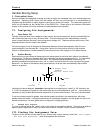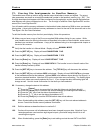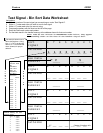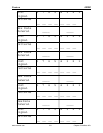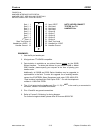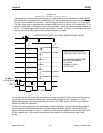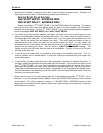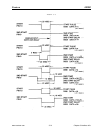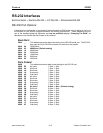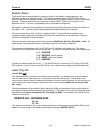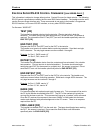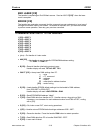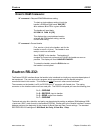
Exatron 3000B
www.exatron.com 3-12 Chapter 3 Interface Info
To abort the test, press the
[Clear]
button on the handler controller. This will sort the DUT to the Home
bin, output tube 5.
Once the handler receives a sort pulse, it checks that:
1. The sort has a corresponding output. If not, you will see:
NO SORT ERROR
displayed, advising that there are no outputs available.
2. Only one sort has been received. Only one sort signal is allowed. If multiple sorts were
received, you will see:
MULTI SORT ERR
displayed. The output shuttle cover LEDs will blink
the pattern of the actual sorts latched by the handler. Two or more LEDs will blink, indicating
the multiple sort error.
If the received sort pulse is acceptable, the contacts will open and the device will be sorted to an output
tube. Or, in the case of plunge-to-board changeover kits, the test site plunger will pick up the device and
rise to its highest point. From there, the device will be sorted to an output tube.
Handler Port Options:
EOT (E
ND
O
F
T
EST
)
The handler port is controlled by two PAL devices. These PALs control the polarity of the
handler's input/output signals and whether "EOT" is to be used or not. The EOT input (pin 13) is not
active unless the correct PAL is installed on the handler’s Front Panel Card #5000-A89. The EOT
signal, when used, will cause the handler to ignore all tester sort input signals until the EOT (normally
High, active Low) is received by the handler.
PAL 101-12.JED (Sum check 76B0) = No EOT signal required.
PAL 101-12EOT.JED (Sum check 75B0) = EOT signal required by the handler.
CORRECT PALS MAY ALWAYS BE OBTAINED FROM EXATRON AT NO CHARGE
.
Listed below are addresses in the handler's battery backed-up RAM which may be edited to fine-tune
the handler for your specific programmer/tester and sorting requirements. These addresses are not
part of the standard power-up selections and
may be modified only by “Changing The RAM,”
as
described in the Handler Set-Up Chapter of this manual.
START PULSE WIDTH: ADDRESS 0098
This delay controls the Start of Test pulse width. The delay counts down in HEX, in 1 millisecond
steps. The standard default is "14." This sets the start test pulse width to 20 milliseconds. On
interfaces using a PC to control the handler, a longer start pulse width may be required to guarantee
that the PC sees the start test pulse from the handler.
CHECK SORT RESET: ADDRESS 00A6
00 = On
FF = Off
The Check Sort Reset feature should always be used on handlers which are employing the
Handler Port interface. This check verifies that all Sort signals to the handler are turned off at the end
of the Start pulse (all Sorts are at Logic High.)
Occasions may arise during operation of the Handler Port interface when the handler sends a Start
pulse to the tester but the tester either does not see the Start signal, or the tester fails to clear the
previous Sort signal. In the latter case, the previous Tester Sort signal is still active at the end of the
Handler's current Start pulse. The handler correctly responds to the previous Sort signal, which means
that the current device under test (DUT) will not be tested and will be mis-sorted. It may appear to the



